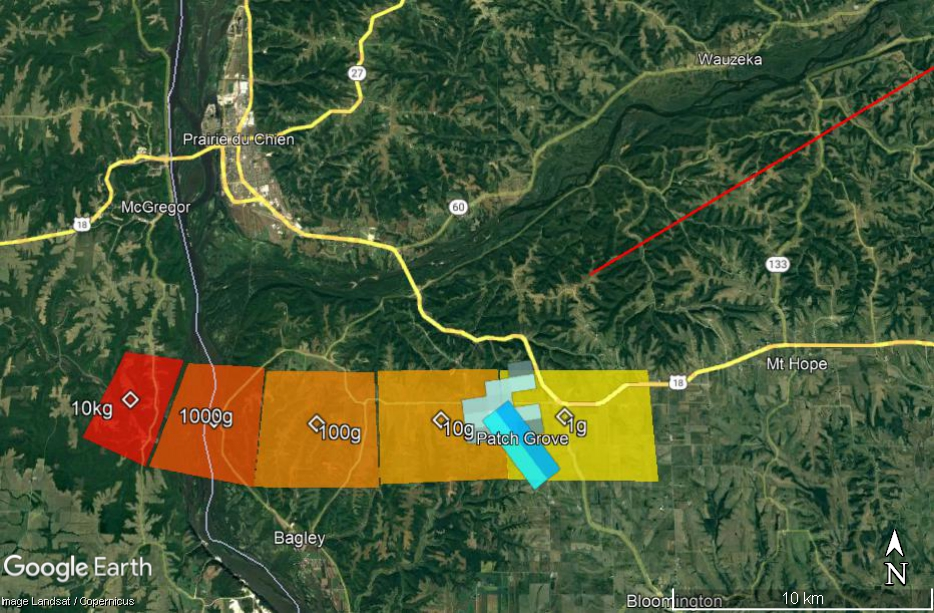DATE/TIME1/20/2022 @ 12:48:03 UTC1/20/2022
|
LAT/LONG42.939029 • -90.972408
42.939029
|

This event was an early morning bolide seen over SW Wisconsin at 6:48 AM CST on 20 Jan 2022 or 12:48 UTC. At the time of this writing 131 eyewitnesses reported the event to American Meteor Society.
Two radar signatures appear to be associated with this event, one from KARX (La Crosse, WI) and another from KGRB (Green Bay, WI). The estimated meteorite masses observed in both signatures are small (2.8 and 0.2g, respectively) but this is typical for weather radar detection of meteorite falls. Larger masses were not detected but may have fallen, since the bigger meteorites are less likely to be detected on weather radar (yes I know that sounds backwards, but they reach the ground faster and there are fewer of them).
No meteorites have been recovered from this event at the time of this writing (21 Jan 2022).
This event does not appear in NOAA GOES Geostationary Lightning Mapper (GLM) data, and nearby seismic signatures are relatively weak. NASA Meteor Watch reports that this meteor was moving very slow (relatively speaking), producing a weak fireball but an enhanced chance of meteorite survival. Evidence suggests that this was a small meteorite fall which produced 2-3g meteorites with good certainty, and might have produced larger meteorites as well.
